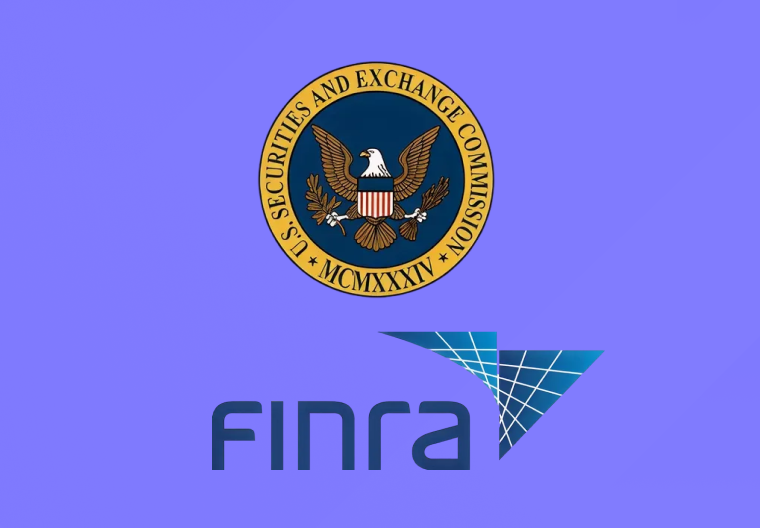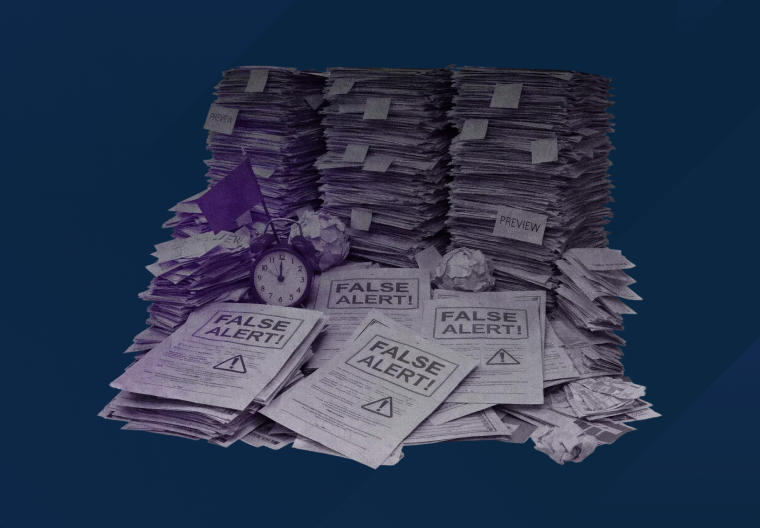
The Art of Financial Camouflage: When ‘Smurfing’ Spells Trouble
In the world of Anti-Money Laundering (AML), there’s a covert player known as the “smurf”. This elusive character is involved in a process called “smurfing” and specializes in breaking down hefty sums of ill-gotten gains into bite-sized, inconspicuous morsels. Why? To dodge the watchful eyes of financial institution monitoring systems that raise the alarm at large transactions. So, what’s smurfing all about? Our blog unveils the secrets of this financial underworld and how “smurfs” navigate the high-stakes game of money laundering making AML Compliance quite challenging.
What is smurfing?
The term “smurfing” in the context of anti-money laundering (AML) refers to a money-laundering strategy in which large sums of illegally obtained money are divided into smaller, less suspicious sums. These smaller sums are subsequently placed individually to avoid discovery because large transactions can trigger alerts in financial institutions’ monitoring systems. The person who does smurfing is usually called a “smurf”.
How do scammers do smurfing and What are the Techniques
Here is a step-by-step explanation of the standard smurfing process:
- Breaking Down Large Amounts: The person or organization in possession of unlawful funds derived, for example, from the sale of illegal drugs, fraud, or other criminal activity, divides the enormous sum into smaller quantities. Normally, these sums are maintained below any reporting thresholds established by financial institutions or regulatory organizations. For instance, in the United States, banks are required to inform the federal government of all cash transactions exceeding $10,000 – on a suspicious activity report (SAR).
- Multiple Deposits: These smaller sums are then put into one or more bank accounts, either immediately by the “smurfs or gradually by a single individual.
- Layering: Once the illegal funds enter the banking system, they don’t remain static. Techniques like “layering” create a complex web of transactions, further obscuring the money’s illicit origins and making it harder for authorities to trace back to the source. After entering the banking system, money may be shifted around to further muddle up its source i.e., where it came from. This could entail moving cash across accounts, taking it out and putting it back in, or buying and selling assets.
- Integration: Following the “layering” procedure, the money is used in genuine transactions, making it difficult to tell whether they were obtained lawfully or not.
Distinction between Smurfing and Structuring
Smurfing- the main objective is to conceal the real source of money drawing and the type of laundered money. Smurfing tries to evade regulatory agencies’ detection procedures by dividing big amounts of illicit money into smaller transactions by utilizing various people or accounts.
Structuring- Even though it also entails breaking up big sums of money into smaller transactions, the main goal of structuring is to avoid particular reporting requirements given by financial institutions or regulatory agencies. In contrast to smurfing, structuring primarily aims to avoid raising obligatory reporting thresholds rather than to hide the funds’ unlawful nature.
Execution:
Smurfing is a more complex and multi-layered method since it frequently involves numerous players (the “smurfs”) who deposit smaller amounts into different accounts. Whereas structuring can be carried out over time by a single person or organization to adhere to predetermined reporting thresholds.
How does smurfing work
Smurfing is a type of money laundering, and there are multiple documented instances of people or organizations adopting the smurfing method for money laundering throughout history. For example, Zhenli Ye Gon, a Chinese-Mexican businessman, is charged with smuggling a drug known as pseudo into Mexico from Asia, where it was purportedly used to create methamphetamine for the US market. When US agents raided one of his homes in Mexico City in 2007, they found about $205 million in cash.
US media sources claim that Ye Gon was believed to have committed smurfing and used a variety of money-laundering techniques. Another incident involving the BCCI was reported about an international bank that was established in 1972 and contributed to one of the worst banking scandals in history. Accusations against BCCI included facilitating money laundering, with smurfing being one of the techniques. The bank was shut down in 1991 in multiple countries.
Smurfing in Different Industries
What is Smurfing in Financial Institutions?
The role of financial institutions and their unintentional engagement in the money laundering process is highlighted explicitly by this term. Financial institutions that, deliberately or unknowingly, permit criminals to employ the smurfing tactic risk being sued for aiding in money laundering operations and for failing to comply with regulatory obligations to report money laundering-related suspicious actions. Smurfing also harms the reputation of financial organizations and undermines public confidence.
What is Smurfing in iGaming?
In the field of iGaming, “smurfing” refers to the practice of creating multiple accounts for various purposes:
- Smurf accounts allow players to experiment and learn without compromising the rankings or stats of their primary gaming accounts. This allows them to try out different strategies, games, or procedures without losing their reputations or achievements and learn new skills.
- Skill-based matching allows users to play against opponents who might be less experienced or skilled as it conceals the opponent’s original capabilities. By using this tactic this tactic against users, one can maximize the chances of winning.
- Fraudulent Practices exploit the bonuses and engage in activities such as matched betting or arbitrage, whereby many accounts are used to manipulate promotion to gain an unfair advantage.
Highlights of the Legal Actions to Avoid Smurfing
Global law enforcement agencies have practiced several strategies to combat money laundering, especially smurfing. These actions are planned to improve monitoring, openness, and efficiency of the resistive campaign in compliance with AML guidelines.
Financial institutions are required to implement a wide variety of techniques to understand the legitimacy of customer and view of their transactions. These procedures include the implementation of due diligence covering both customer due diligence and enhanced due diligence to detect anomalies that remain concealed during standard screening. Strict regulation making it challenging to hold many accounts can help reduce instances of gaming exploitation. Additionally, it is important to keep a view of high-risk individuals.
KYC AML and Customer Due Diligence Policies Preventing Smurfing
KYC criteria involve identifying and authenticating the customer to guarantee that the financial institution is working with a real person with no criminal history or current affiliations. Financial institutions can reduce the rising risk with the use of instituting robust KYC procedures. Please be aware that KYC is only one initial step in the identification and prevention of smurfing.
When dealing with high-risk clients or in situations where there is reason to suspect wrongdoing, financial institutions should make additional Customer Due Diligence efforts. Understanding the transaction’s goal and its origins may be one of these additional tests to confirm the validity of consumer transactions.
Significance of AML Compliance Measures
The increase in activity of money laundering is a serious problem for many business and economic sectors. Establishing policies and safeguarding systems from this illegal behavior is therefore essential. Financial institutions may efficiently monitor transactions, investigate suspicious activity, and authenticate customers by putting Anti-money Laundering (AML) technologies in place. This proactive method allows for the early identification of odd behavior and deters con artists. Additionally, it guarantees regulatory compliance and shields companies from large fines.
Risk Indicators Related to the Smurfing in Money Laundering
The following list of danger signs for smurfing in money laundering should alert financial institutions:
- Multiple Small Cash Deposits: Be alert if a person or group repeatedly deposits tiny amounts of cash into the same account while utilizing multiple bank branches. This trend may indicate an effort to get around reporting thresholds.
- Exact AML Compliance Cut-off: Transactions that routinely fall just short of the AML compliance cut-off limit should trigger red flags. This exact matching could be a covert attempt to avoid detection.
- Atypical Transaction Patterns: Pay attention to transactions that differ from the usual patterns of a consumer. Smurfing may be indicated by sudden big financial deposits or regular transfers to offshore accounts unrelated to the customer’s legal business operations.
- Frequent money Transfers: Increased scrutiny should be applied whenever monies are transferred between different accounts, particularly when they involve high-risk jurisdictions. These transfers could be a part of a smurfing plot to hide the trail of money.
- Employing Unnecessary Intermediaries: Pay attention to transactions that use intermediaries that don’t seem to be there for any sort of business reason. Third parties being unnecessarily involved in financial transactions could be an attempt to conceal the source and destination of payments.
How AML Watcher Can Help You in Developing a Robust AML Framework to Prevent Surfing
AML Watcher takes a comprehensive approach, combining advanced transaction monitoring, timely notifications, and in-depth data analytics to identify suspect patterns. You may enhance your defenses against numerous tiny cash deposits, transactions below AML thresholds, and other smurfing red signs with AML Watcher.
Contact us through our complete platform that equips your institution to maintain compliance, reduce risks, and actively tackle the ongoing threat of money laundering.
We are here to consult you
Switch to AML Watcher today and reduce your current AML cost by 50% - no questions asked.
- Find right product and pricing for your business
- Get your current solution provider audit & minimise your changeover risk
- Gain expert insights with quick response time to your queries



